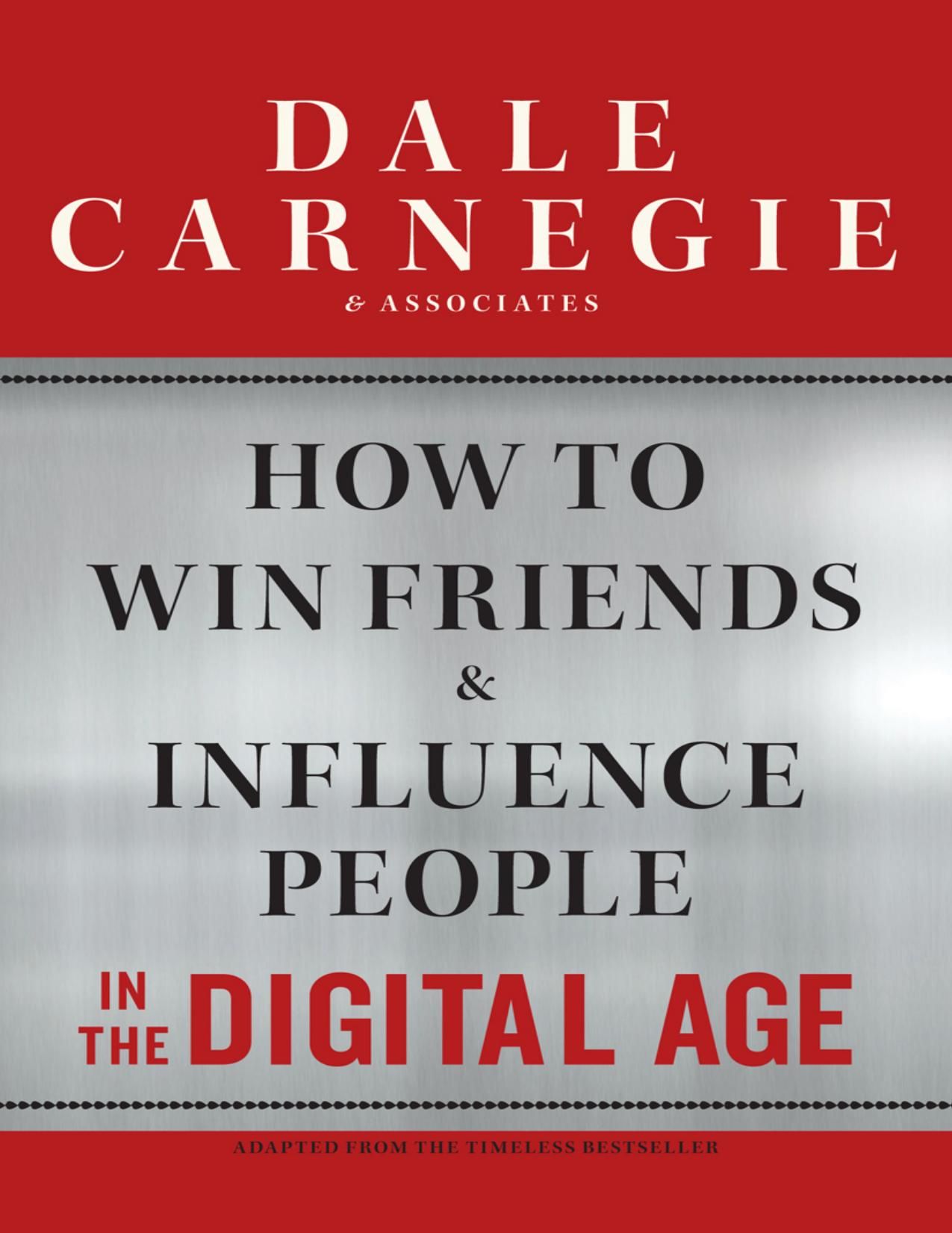How to Win Friends and Influence People in the Digital Age by Dale Carnegie & Associates

Author:Dale Carnegie & Associates
Language: eng
Format: epub, azw3, pdf
Publisher: Simon & Schuster
Published: 2011-04-06T04:00:00+00:00
3
Admit Faults Quickly and Emphatically
Only slightly less of a cliché than “The check is in the mail” is this: “The ref blew the call.” While the sport and circumstances vary, referees regularly make mistakes. Occasionally the consequences are significant. Around the world some are so famous they have their own monikers.
Take the “hand of God” goal, for instance. In the 1986 World Cup quarterfinals, Argentina and England were locked in a scoreless tie when Argentina’s captain, Diego Maradona, leapt high in the air over goalie Peter Shilton and punched the ball into the net. The referee, Ali Bin Nasser, didn’t see the handball and ruled the goal legal.
Then there was Jeffrey Maier. In the 1996 American League Championship Series, the Orioles led the Yankees 4–3 in the bottom of the eighth inning when Yankees shortstop Derek Jeter hit a long fly ball into right field. The twelve-year-old Maier reached over the wall and caught the ball, preventing Orioles right fielder Tony Tarasco from making the play. Umpire Rich Garcia improperly called a home run instead of an out or automatic double. The Yankees went on to win the game.
Add to these incidents ten thousand other blown calls, and fan exasperation at referee errors can be faintly understood. Certainly we are passionate about our teams. But referees are human, after all, and we can understand making mistakes. What makes exasperation linger, however, is the inability or unwillingness of the referees to admit their mistakes.
That is what makes one of the worst examples of referee error so extraordinary—and ultimately redeeming.
It’s been called the “perfect game robbery.” Since 1900—the generally recognized start of baseball’s modern era—nearly four hundred thousand games have been played in the United States. During this span only eighteen times has a pitcher delivered perfection, retiring every opposing batter in order without giving up a walk or a hit and without his teammates putting a runner on base with an error. To put this in perspective, the odds of a perfect game being thrown in baseball (one in twenty thousand) are far smaller than the chance you will be struck by lightning in your lifetime.1
But a perfect game is precisely what Detroit Tigers pitcher Armando Galarraga had happening one early June evening in 2010. He’d recorded twenty-six consecutive outs and had gotten the twenty-seventh batter to tap a weak ground ball to the first baseman. Galarraga ran from the mound, took the throw from the first baseman, tagged the bag ahead of the runner and got ready to celebrate. There was only one problem: the umpire, Jim Joyce, swung his arms wide and shouted, “Safe!”
Galarraga’s perfect game had been lost in one of the most egregious blown calls in sports history.
But here is where things took an equally unexpected turn. It is perhaps the most significant and memorable detail of the story.
When he got back to the umpire’s locker room, Joyce immediately cued the game video and watched the play—only once. He saw how badly he’d blown the call. But
Download
How to Win Friends and Influence People in the Digital Age by Dale Carnegie & Associates.azw3
How to Win Friends and Influence People in the Digital Age by Dale Carnegie & Associates.pdf
This site does not store any files on its server. We only index and link to content provided by other sites. Please contact the content providers to delete copyright contents if any and email us, we'll remove relevant links or contents immediately.
Doing It: Let's Talk About Sex... by Hannah Witton(8605)
The 5 Love Languages: The Secret to Love That Lasts by Gary Chapman(8592)
Should I Stay or Should I Go? by Ramani Durvasula(6848)
The Road Less Traveled by M. Scott Peck(6685)
The Lost Art of Listening by Michael P. Nichols(6528)
Daring Greatly by Brene Brown(5694)
We Need to Talk by Celeste Headlee(4918)
Beartown by Fredrik Backman(4488)
Men In Love by Nancy Friday(4381)
The State of Affairs by Esther Perel(3975)
The Rules Do Not Apply by Ariel Levy(3948)
How To Win Friends and Influence People by Dale Carnegie(3828)
Reflections Of A Man by Mr. Amari Soul(3735)
The Ethical Slut by Janet W. Hardy(3545)
Algedonic by r.h. Sin(3533)
Pillow Thoughts by Courtney Peppernell(3476)
He's Just Not That Into You by Greg Behrendt & Liz Tuccillo(3338)
Finding My Forever by Heidi McLaughlin(3335)
I Love You But I Don't Trust You by Mira Kirshenbaum(3267)
